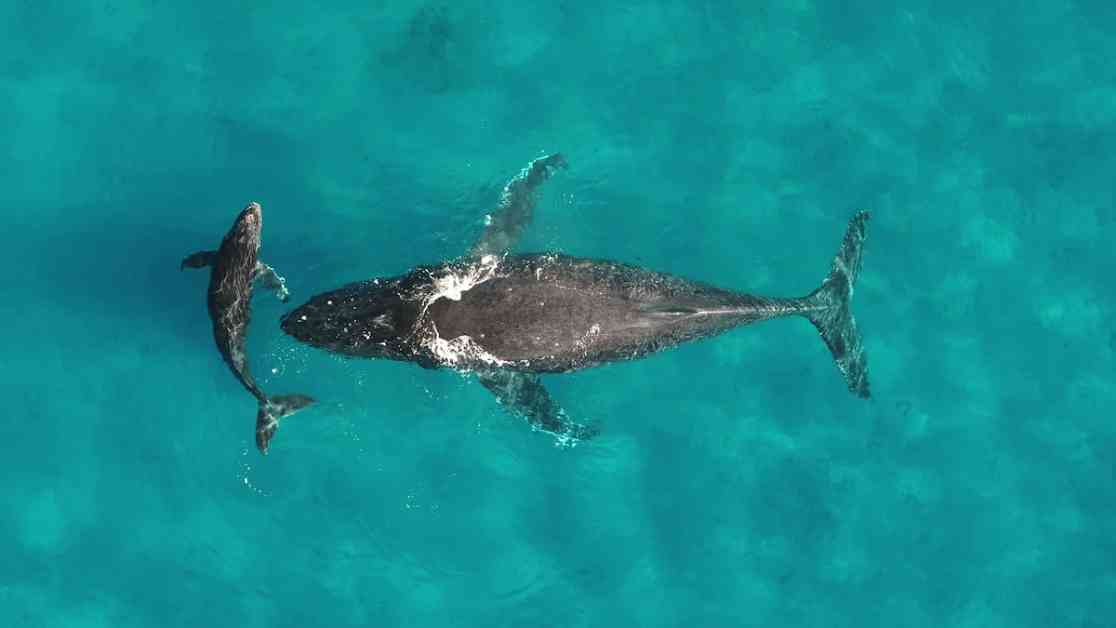Whales Transport Vital Nutrients Across Oceans: A Tale of the Great Whale Conveyor Belt
In the vast expanse of the world’s oceans, a little-known phenomenon takes place that plays a crucial role in maintaining the delicate balance of marine ecosystems. Whales, these majestic giants of the sea, are not only awe-inspiring creatures but also vital agents in the distribution of essential nutrients that sustain life across thousands of miles.
Not just by their majestic presence, but also through their bodily functions, whales contribute significantly to the health of our oceans. A recent study led by the University of Vermont has shed light on the remarkable journey that whales undertake, transporting tons of critical nutrients from the cold waters of their feeding grounds to the warm tropical seas where they mate and give birth.
The story of how these massive creatures become unwitting carriers of life-giving elements is a fascinating tale of nature’s interconnectedness and the intricate web of relationships that sustain our planet’s biodiversity. Let’s delve deeper into this extraordinary journey of the great whales and the vital role they play in the marine ecosystem.
### The Great Whale Conveyor Belt: A Vital Link in Oceanic Ecosystems
Whales, including species like gray whales, humpbacks, and right whales, embark on epic migrations that cover thousands of miles, from the rich feeding grounds in high latitudes to the nutrient-poor tropical and subtropical coastal areas. The study estimates that these great whales collectively transport around 4,000 tons of nitrogen annually to these low-nutrient regions, enriching the waters and fostering the growth of phytoplankton, essential for the marine food chain.
According to Joe Roman, a biologist at UVM and co-author of the study, the movement of these nutrients is critical for sustaining the delicate balance of coastal ecosystems. The concentration of nitrogen and other essential elements in these regions supports the growth of diverse marine life, from microscopic algae to sharks, fish, and invertebrates, creating a vibrant and thriving underwater world.
### Whale Migrations: A Remarkable Feat of Endurance and Vitality
The journey of whales from their feeding grounds to mating and breeding areas in tropical waters is a testament to their resilience and adaptability. For instance, humpback whales in the North Pacific can gain up to 30 pounds a day during the summer months as they feed on herring and krill to build up energy reserves for their long migration.
As these mighty creatures traverse thousands of miles without feeding, their bodies undergo incredible transformations to sustain their journey. The sheer scale of their migrations, spanning from the icy waters of Antarctica to the warm breeding sites off Costa Rica, showcases the remarkable capabilities of these marine giants and their vital role in nutrient transport across vast oceanic expanses.
### Whales: Nature’s Circulatory System on a Planetary Scale
Whales, with their massive size and migratory patterns, act as nature’s circulatory system, transporting essential nutrients across oceans and influencing ecosystems on a global scale. Andrew Pershing, an oceanographer at Climate Central and co-author of the study, emphasizes the profound impact of whales on marine environments, highlighting their role as key players in maintaining the health and vitality of the world’s oceans.
While the study focused on the contributions of baleen whales like humpbacks and gray whales, the researchers acknowledge the potential significance of blue whales, Earth’s largest animals, in the nutrient transport process. Despite historical challenges, such as industrial whaling and habitat degradation, efforts to protect and conserve whale populations have shown promising results, with some species rebounding and contributing to the overall health of marine ecosystems.
In conclusion, the study offers a compelling narrative of the great whale conveyor belt, a natural phenomenon that underscores the interconnectedness of life in our oceans and the vital role that whales play in sustaining marine biodiversity. As we continue to unravel the mysteries of the deep blue sea, the story of whales and their epic migrations serves as a poignant reminder of the beauty and complexity of the natural world.
Subscribe to our newsletter for more fascinating insights into environmental science and conservation efforts. Join us in celebrating the wonders of our planet and the remarkable creatures that call it home. Together, we can work towards a sustainable future for generations to come.














